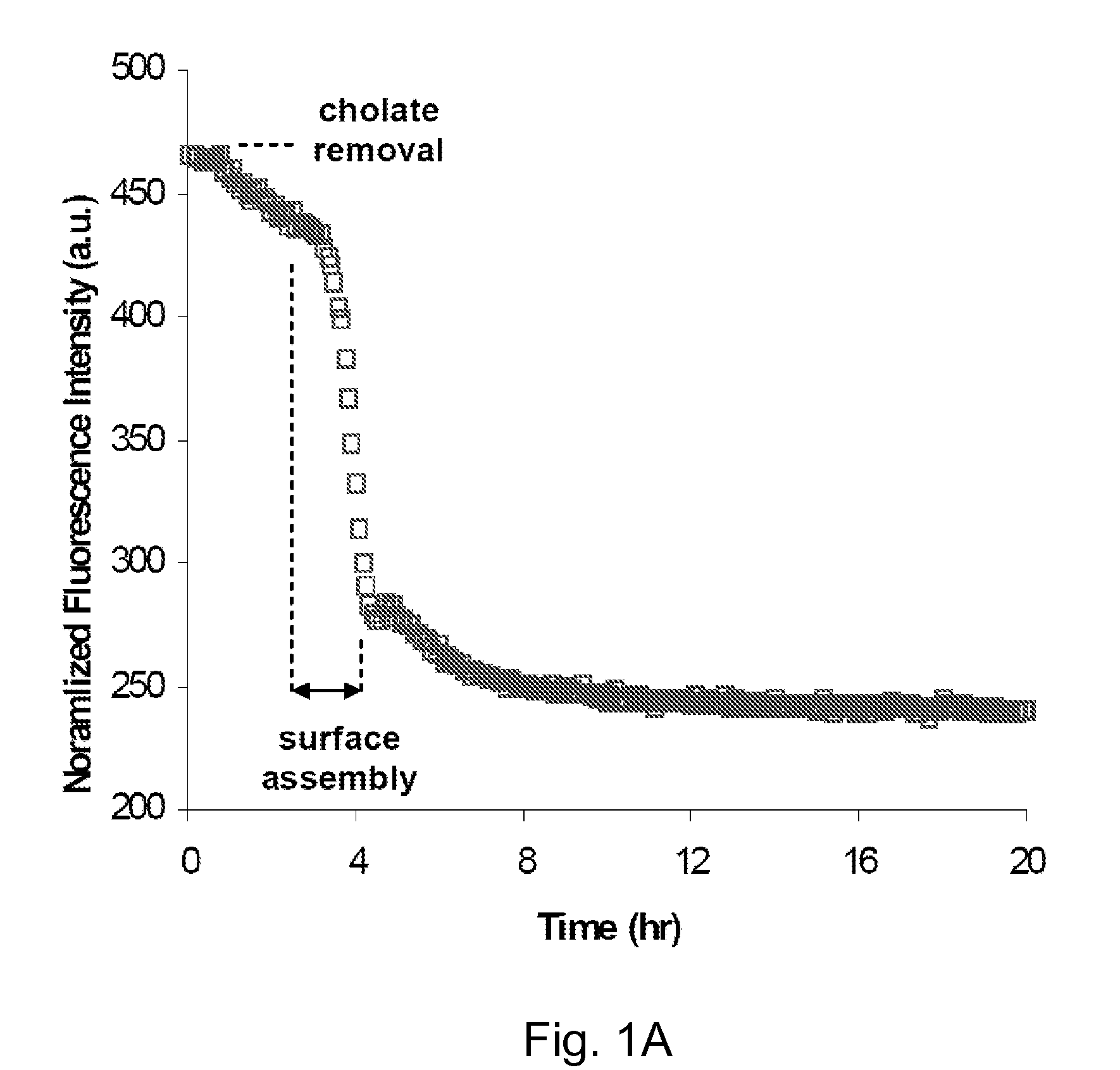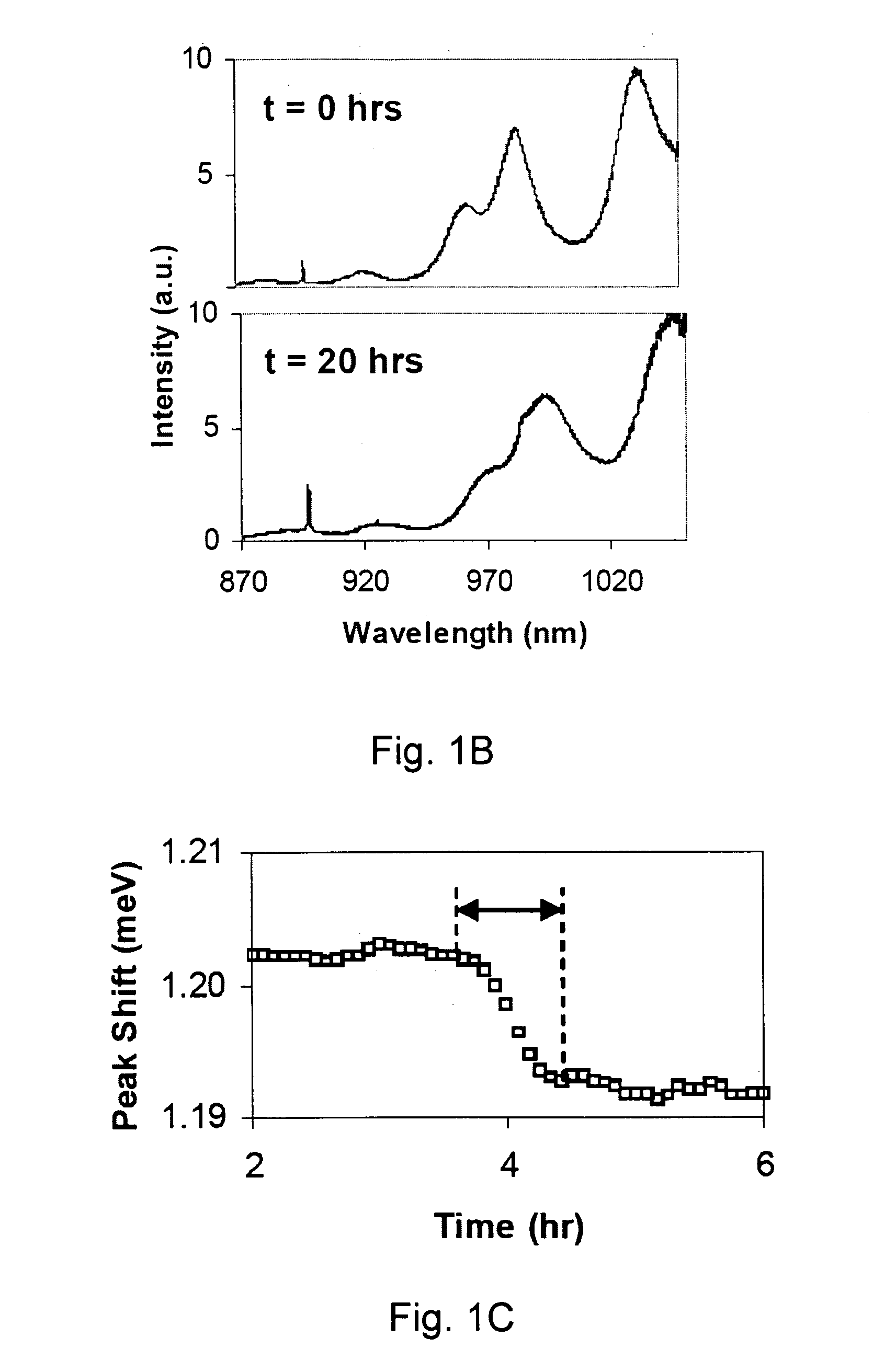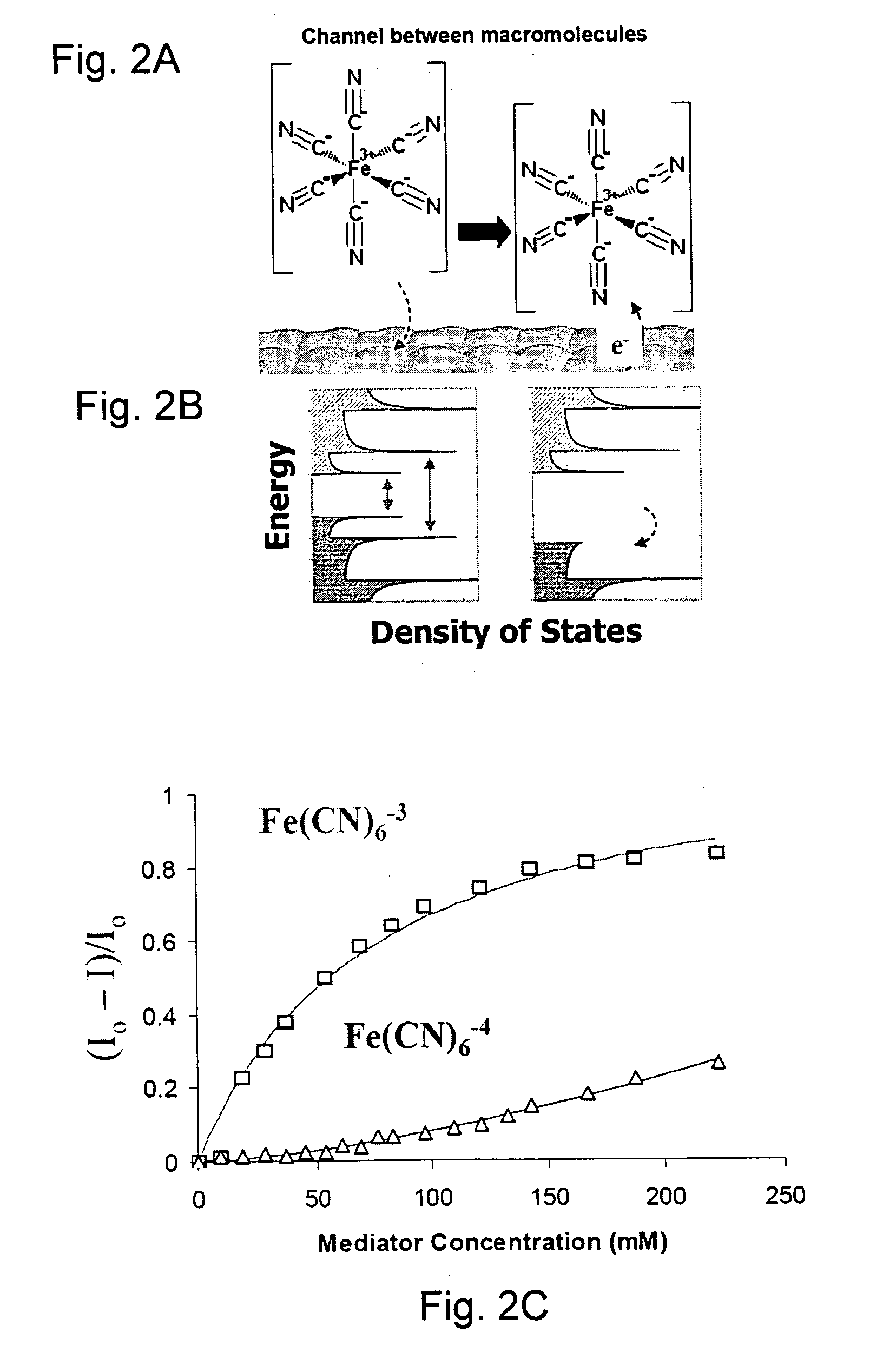Sensors employing single-walled carbon nanotubes
a carbon nanotube and sensor technology, applied in the field of single-walled carbon nanotube sensors, can solve the problems of affecting the adsorption of charged reagents, affecting the design of sensors, and affecting the adsorption efficiency of carbon nanotubes,
- Summary
- Abstract
- Description
- Claims
- Application Information
AI Technical Summary
Benefits of technology
Problems solved by technology
Method used
Image
Examples
Embodiment Construction
[0072] The invention relates most generally to non-covalent complexes of carbon nanotubes with polymers, particularly sensing polymers and more particularly with proteins, polypeptides and polysaccharides.
[0073] The present invention provides sensors which comprise analyte sensing composition which in turn comprise complexes of carbon nanotubes with sensing polymers. In these complexes, the sensing polymer is non-covalently complexed with the carbon nanotube. Preferably, in the sensing composition, the sensing polymer is complexed with the carbon nanotube to provide individually dispersed carbon nanotubes with no electronic interaction or minimal electronic interaction with other carbon nanotubes in the composition. The sensing polymer provides for selective interaction with an analyte or specific interaction with an analyte. The term “specific” is used to indicate an interaction that can be used to distinguish the analyte from most other chemical species except optical isomers, is...
PUM
| Property | Measurement | Unit |
|---|---|---|
| pH | aaaaa | aaaaa |
| length | aaaaa | aaaaa |
| length | aaaaa | aaaaa |
Abstract
Description
Claims
Application Information
 Login to View More
Login to View More - R&D
- Intellectual Property
- Life Sciences
- Materials
- Tech Scout
- Unparalleled Data Quality
- Higher Quality Content
- 60% Fewer Hallucinations
Browse by: Latest US Patents, China's latest patents, Technical Efficacy Thesaurus, Application Domain, Technology Topic, Popular Technical Reports.
© 2025 PatSnap. All rights reserved.Legal|Privacy policy|Modern Slavery Act Transparency Statement|Sitemap|About US| Contact US: help@patsnap.com



